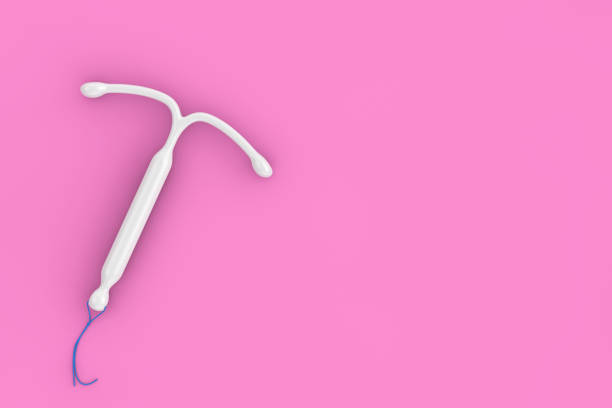Getting an intrauterine device (IUD) as a form of contraception is a popular and effective choice for many women. However, with this method of birth control comes a number of questions about how to take care of your body post-insertion, especially when it comes to activities such as using tampons. One of the most common questions asked by those who have recently undergone an IUD procedure is: Can you use tampons with an IUD?
In this article, we’ll explore this question in detail, examining the safety, concerns, and guidelines surrounding the use of tampons after an IUD insertion. We’ll also provide helpful advice to ensure you’re comfortable and well-informed during your recovery period.
What is an IUD?
Before we dive into the specifics of tampon usage, let’s quickly review what an IUD is and how it works. An IUD is a small, T-shaped plastic and copper device placed inside the uterus by a healthcare provider to prevent pregnancy. There are two main types: hormonal and copper IUDs. Hormonal IUDs release a small amount of progestin, while copper IUDs rely on the properties of copper to prevent sperm from fertilizing an egg.
The insertion process is typically quick, though it may cause some discomfort. Many women experience cramping and spotting in the days following insertion, which can raise concerns about tampons and other menstrual products.
Can You Use Tampons with an IUD?
The question many women ask after an IUD procedure is, Can you use tampons with an IUD? The short answer is yes, you generally can. However, there are a few factors to consider when deciding whether or not to use tampons after getting an IUD.
The IUD Insertion Process and Immediate Aftercare
After the insertion of an IUD, it’s normal to experience mild cramping, spotting, or irregular bleeding. Your healthcare provider will likely recommend that you avoid tampons for the first 24 to 48 hours to give your body a chance to adjust to the device. During this time, it’s essential to listen to your body and follow your provider’s advice.
After this initial period, tampons are typically safe to use, but keep in mind the following considerations:
-
Comfort level: Some women may experience more intense cramping or discomfort when using tampons right after the procedure, especially during the first few days.
-
Monitoring the string: The strings attached to the IUD may be slightly longer or may shift in the first few days. Using tampons immediately after insertion might make it harder to check if the strings are in the proper position, which could lead to concerns about the IUD’s placement.
Why You Should Be Cautious in the First Few Days
While tampons can be used safely after an IUD insertion, it’s important to be cautious in the first few days post-procedure for a couple of key reasons:
-
Risk of infection: After an IUD insertion, the cervix may be more sensitive, and introducing a tampon too soon could increase the risk of infection. Make sure to keep everything sterile and avoid using tampons until you’re fully healed or cleared by your healthcare provider.
-
IUD displacement: In rare cases, an IUD can become displaced after insertion. Though it is uncommon, inserting a tampon too soon or without care might disturb the IUD, potentially increasing the risk of discomfort or even expulsion. It’s important to stay aware of your body and consult your doctor if you notice any unusual pain or changes.
What to Do if You Experience Discomfort with Tampons
If you find that using tampons is uncomfortable or painful after an IUD insertion, consider the following alternatives:
-
Pads or panty liners: These can be more comfortable in the days following the procedure and will allow you to keep the area around your cervix free from additional pressure.
-
Menstrual cups: If you prefer internal menstrual products, you could try using a menstrual cup after receiving medical advice. Some women find these easier on the body after IUD insertion than tampons.
-
Wait a little longer: Sometimes, simply waiting for your body to heal and adjusting to the IUD can alleviate discomfort. If you’re unsure, don’t hesitate to contact your healthcare provider for guidance.
The Role of Tampons and IUDs in Period Management
While you can typically use tampons with an IUD after the first few days of recovery, it’s essential to remember that your period might change following the procedure. Some women experience heavier periods, while others may have lighter or more irregular cycles. Here’s what to expect:
-
Hormonal IUDs: These may reduce the flow of your period or even stop it altogether. Many users experience lighter bleeding or occasional spotting.
-
Copper IUDs: These tend to result in heavier, longer periods for some women, at least in the first few months after insertion.
As your body adjusts to the IUD, your menstrual cycle should stabilize, but it’s important to track any changes and discuss them with your doctor if needed.
How to Care for Your IUD
While you can use tampons after an IUD procedure, keeping up with proper care is important to maintain the health and effectiveness of your IUD. Here are some tips to ensure everything goes smoothly:
-
Check your IUD strings: After your IUD is inserted, you’ll want to check the strings periodically to ensure that the device is still in place. If you’re using tampons, you might find it a bit more difficult to check the strings during your period, so it’s essential to check them in the days following your period.
-
Report any symptoms: If you experience unusual pain, discomfort, or if the strings feel out of place, contact your healthcare provider. These could be signs that your IUD has shifted or become displaced.
-
Regular check-ups: Regular appointments with your gynecologist or healthcare provider are essential to ensure that the IUD is still working effectively and has not caused any complications.
Conclusion
So, can you use tampons with an IUD? The answer is yes, but with caution. After the initial healing period, tampons are generally safe to use with an IUD, but it’s important to monitor your body for any signs of discomfort or complications. Always follow the guidance of your healthcare provider and avoid tampons in the first few days post-insertion to allow for proper healing.
With careful consideration and attention to your body’s needs, you can successfully use tampons with an IUD while maintaining good menstrual hygiene and IUD care. If you experience any concerns, don’t hesitate to consult your doctor for personalized advice.
By staying informed and following these steps, you can enjoy the benefits of both your IUD and your menstrual products safely and comfortably.

![[**Call Us] Quick Ways to contact +1820.400.8909 ⇆ Coinbase Tech Support Number](https://bioneerslive.org/wp-content/uploads/2025/05/conbase-tfn-1820-400-8909-usaVcrFCcj-270x162.png)

